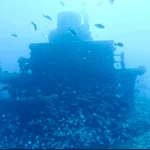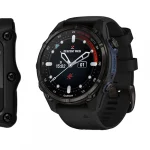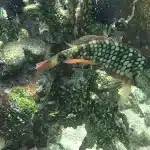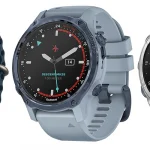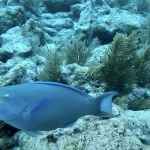Discovering the Gems: Top 5 Dive Sites on the Shipwreck Trail

Table of Contents
- Discovering the Gems: Top 5 Dive Sites on the Shipwreck Trail
- How to Plan Your Dive Adventure Like a Pro
- Common Mistakes Divers Make at Shipwreck Sites and How to Avoid Them
- Myths About Shipwreck Diving: Debunking Common Misconceptions
- Future of Shipwreck Diving: Innovative Techniques and Tools
- Comparing Key West’s Shipwreck Trail to Global Diving Hotspots
- The Economic Impact of Shipwreck Diving Tourism in Key West
- Safety First: Key Guidelines for Diving at Historical Sites
Introduction
Dive into the rich maritime history of Key West through its fascinating Shipwreck Trail, offering a treasure trove of underwater archaeological sites. This guide will equip scuba diving enthusiasts with everything they need to make the most out of their underwater adventures.
Discovering the Gems: Top 5 Dive Sites on the Shipwreck Trail
How to Plan Your Dive Adventure Like a Pro
To plan an effective scuba diving trip to Key West’s Shipwreck Trail, focus on site selection, safety, and logistics. Here’s a structured approach:
Pre-Trip Planning
- Choose Dive Operators: Partner with PADI-certified dive operators for safe, guided experiences. Many offer multi-day packages tailored to skill levels.
- Select Diving Sites: Key wrecks on the Florida Keys Shipwreck Trail include:
- USNS Gen. Hoyt S. Vandenberg: The largest artificial reef, resting at 140 ft with shallow mooring buoys (60–65 ft) for beginners. Features include radar dishes and marine life-rich corals.
- Spiegel Grove: A 510-ft Navy ship at 130–140 ft, ideal for advanced divers.
- Benwood: A shallow wreck (25–35 ft depth) for beginner-friendly photography and exploration.
- Cayman Salvage Master: A former freighter at 45–60 ft with easy penetration opportunities.
- Plan Itinerary:
- Day 1: Benwood & Spiegel Grove (shallow to moderate depths).
- Day 2: Vandenberg (explore radar dishes and exterior structures).
- Day 3: Duane or Eugene (sister ships upright at 90–130 ft).
Essential Gear
- Dive Computer: Tracks depth/time and calculates safe ascents.
- BCD: Adjustable buoyancy control for comfort and stability.
- Fins: Full-foot or open-heel designs for propulsion in currents.
- Wetsuit: 3/4 mm thickness for thermal protection in warm Keys waters.
Safety and Logistics
- Depth Awareness: Stick to certification limits (e.g., Open Water divers avoid wrecks below 60 ft).
- Guided Tours: Opt for penetration-focused dives with certified instructors, especially for technically demanding wrecks like the Vandenberg.
- Post-Dive Recovery: Plan surface intervals and avoid flying within 24 hours of diving.
Key Tips
- Download an Underwater Guide: NOAA’s free resources for each wreck site can enhance your experience.
- Combine with Reef Diving: Pair wreck dives with coral reef visits for ecosystem diversity.
- Budget: Estimate $120–150 per guided wreck dive, plus gear rental.
For a smooth experience, book in advance during peak season (November–April) and verify dive operator safety protocols before booking.
How to Plan Your Dive Adventure Like a Pro
Shipwreck diving presents unique challenges beyond typical scuba risks, with common mistakes often stemming from inadequate preparation or disregard for specialised safety protocols. Below are key errors divers make at wreck sites and evidence-based strategies to mitigate them:
Entering Overhead Environments Unprepared
Penetrating wrecks without advanced training ranks among the most dangerous mistakes. Wrecks create overhead environments where direct ascents are impossible, and disorientation risks spike due to silt disturbances. Specialised wreck-penetration certification is essential for learning air-sharing techniques for tight spaces and emergency exit protocols.
Poor Air Management
Divers frequently miscalculate air consumption when exploring wrecks, risking depletion before exiting. Technical guidelines recommend reserving 1/3 of air for entry, 1/3 for exit, and 1/6 for emergencies. Using redundant air sources like pony bottles and practising gas management calculations pre-dive are critical strategies to ensure safety.
Ignoring Environmental Hazards
- Stirring silt: Contact with wreck surfaces often triggers silt-outs, reducing visibility to zero in seconds. Maintaining neutral buoyancy and avoiding fin kicks near the seabed prevents this.
- Structural instability: Collapsing debris or shifting metal poses crushing risks. Divers should avoid unstable sections and heed guides’ warnings about compromised areas.
Equipment Shortcomings
Inadequate gear choices can exacerbate risks:
- Single light source: Always carry a primary light and backup lights.
- No guideline/reel: Deploying a continuous guideline from the entry point prevents disorientation in silted conditions.
- Standard regulators: Use long-hose regulators for easier air-sharing in confined spaces.
Neglecting Dive Parameters
Exceeding depth limits or bottom time increases the risk of decompression sickness. Adhering to conservative dive plans using computers, and prioritising safety stops even when exiting wrecks is crucial. Guided dives often follow strict profiles to stay within recreational limits.
Proactive measures divers should take include:
- Pre-dive wreck mapping: Study site-specific layouts and potential hazards.
- Buddy checks: Verify redundancy gear and communication signals before entry.
- Guided dives: Leverage local experts’ knowledge of wreck conditions and safe pathways.
By combining advanced training, disciplined gas management, and purpose-built equipment, divers can safely explore these underwater time capsules while minimising risks.
Common Mistakes Divers Make at Shipwreck Sites and How to Avoid Them
Diving into the world of shipwrecks is an incredibly enriching experience, yet many misconceptions persist about the practice. Addressing these myths is essential for fostering a safe and enjoyable diving environment, especially for those exploring the historic wrecks of Key West.
- Myth 1: Shipwreck Diving is Extremely Dangerous
Many potential divers fear that shipwreck diving is inherently risky. However, with proper training and adherence to safety protocols, it can be as secure as diving in more familiar locations, such as coral reefs. Statistics reveal that diving is statistically safer than activities like swimming or cycling, with a low incidence of emergency room visits related to diving. - Myth 2: Only Expert Divers Can Explore Shipwrecks
There is a common belief that only technical divers, with advanced certifications, can access shipwrecks. The truth is that many wrecks are within the reach of recreational divers, especially those marked for beginners. Of course, appropriate training is necessary, but it does not exclusively require technical diving skills. - Myth 3: You Must Purchase Expensive Gear to Dive
The notion that one must invest heavily in equipment before diving is misleading. Many dive shops offer rental options that eliminate the need for upfront investment. This accessibility allows beginners to experience the thrill of shipwreck diving without a large financial commitment. - Myth 4: Sharks Are a Major Threat
A widespread fear among scuba divers is the threat of shark attacks. In reality, shark encounters during diving are incredibly rare. Reports indicate that unprovoked shark attacks worldwide are unlikely to threaten divers. - Myth 5: Diving is All About Coral and Marine Life
Another misconception is that scuba diving primarily involves exploring marine life. While this is a significant part of the diving experience, many divers are equally captivated by the historical and archaeological aspects of shipwrecks. Wrecks provide a unique opportunity to explore human history submerged beneath the waves, offering insight that goes beyond marine ecosystems.
Myths About Shipwreck Diving: Debunking Common Misconceptions
Advanced Underwater Robotics
Innovations in underwater robotics, particularly Autonomous Underwater Vehicles (AUVs) and Remotely Operated Vehicles (ROVs), are redefining shipwreck exploration. AUVs autonomously survey vast areas of the seafloor, equipped with advanced sensors that identify potential wreck sites in regions that may be both too deep and hazardous for human divers. ROVs complement this technology by capturing high-definition video and photographs, allowing for detailed inspections from a safe distance. This approach greatly accelerates the process of discovering shipwrecks while minimizing risks to divers and reducing the environmental footprint of exploration efforts.
AI-Driven Data Analysis
The integration of artificial intelligence in data analysis further enhances shipwreck diving. This technology processes vast amounts of information collected from AUV missions, quickly identifying potential targets and reducing the need for labour-intensive manual searches. After a wreck is located, the use of photogrammetry allows for the creation of precise, three-dimensional models from thousands of overlapping images. These digital representations facilitate detailed study and environmental monitoring of wreck sites, enabling researchers to protect and conserve these underwater treasures effectively.
Smart Dive Gear
Today’s divers are also benefiting from AI-powered dive computers that can synchronize with smartphones. These devices offer real-time feedback, dive planning, and automatic logging, significantly improving safety and efficiency during explorations. Additionally, the adoption of sustainable materials in diving gear—such as recycled neoprene for wetsuits—reflects a growing environmental consciousness within the diving community.
Eco-Friendly Exploration
With an increasing emphasis on marine conservation, many diving expeditions are incorporating sustainable practices. From biodegradable equipment packaging to gear designed for longevity, these eco-friendly approaches are becoming integral to the future of shipwreck exploration. Although not a tool in the traditional sense, these practices contribute significantly to minimizing ecological impacts while respecting and preserving underwater environments.
Dive Computers
- Diving Computers for Female Divers
- Wreck Diving Computers
- Beginner Diving Computers
- Low-Light Diving Computers
- Technical Diving Computers
- Freediving Computers
- Underwater Photography Diving Computers
- Cold-Water Diving Computers
- Travel-Friendly Diving Computers
- Multi-sport Diving Computers
- Budget-Friendly Diving Computers
- Advanced Recreational Diving Computers
- Smartwatch-Compatible Diving Computers
- Child-Friendly Diving Computers
- Military or Professional Diving Computers
Future of Shipwreck Diving: Innovative Techniques and Tools
Comparing Key West’s Shipwreck Trail to Global Diving Hotspots
The Florida Keys Shipwreck Trail showcases a unique collection of underwater archaeological treasures. As scuba divers descend into this aquatic realm, they experience a blend of historical significance and ecological richness not found in every diving location. To truly appreciate what Key West offers, it helps to compare it with renowned global diving destinations like Truk Lagoon, the Red Sea, and the Belize Blue Hole.
Wreck Diversity: The Shipwreck Trail features nine accessible wrecks, ranging from the San Pedro, a historic 1733 vessel lying in only 18 feet of water, to the Thunderbolt, which sinks to depths of 120 feet, catering to a variety of skill levels. In contrast, Truk Lagoon boasts around 70 WWII wrecks, primarily intended for advanced divers. The Red Sea offers significant wrecks like the SS Thistlegorm, although it primarily attracts divers for its vibrant coral reefs.
Depth Range and Accessibility: Key West provides a remarkable depth range from shallow wrecks ideal for novices, like the Benwood (between 25 to 45 feet), to deeper explorations for experienced divers. This accessibility is pivotal for divers of all levels. The vast depth range at locations like the Blue Hole in Belize, piercing down more than 400 feet, offers a thrilling challenge but requires advanced certifications.
Historic Significance: The Florida Keys are rich in history; wrecks like the San Pedro provide a glimpse into maritime history dating back centuries. While the Thistlegorm in the Red Sea serves a similar purpose with its WWII relics, the sheer age and stories tied to Key West’s wrecks create a unique allure for history enthusiasts.
Marine Life: The Shipwreck Trail is not just about human history; it’s also a vibrant marine ecosystem filled with coral-encrusted wrecks that attract fish species such as angelfish and the magnificent goliath grouper. In comparison, the Great Barrier Reef and the Maldives are famous for their diverse marine life and breathtaking coral formations, elevating the diving experience in those locations.
Ultimately, the Key West Shipwreck Trail offers an engaging mix of accessibility, historical depth, and ecological interest. While destinations like Truk Lagoon or the Red Sea may provide specialized diver experiences or larger wreck collections, Key West’s array fosters a well-rounded adventure suitable for divers seeking both education and excitement.
Comparing Key West’s Shipwreck Trail to Global Diving Hotspots
Shipwreck diving tourism, particularly around artificial reefs like the USS Vandenberg in Key West, has shown to provide significant economic benefits. This section delves into the various dimensions of its impact on the local economy.
Economic Outputs and Employment
- Recreational expenditures increased by $6.5 million post-Vandenberg deployment, generating a total economic output of $7.29 million with $3.2 million in labour income.
- Job creation surged, leading to 105 new jobs directly linked to tourism spending.
- Local dive charter businesses reported a remarkable 188.9% increase in activity, reflecting heightened demands for diving services.
Industry-Specific Impacts
Key sectors benefiting from shipwreck tourism include:
- Retail (sporting goods, bookstores): This sector accounted for a significant share of employment, with approximately 43.9 jobs attributed to diving-related spending in Florida.
- Hotels, restaurants, and support services: A substantial portion of job creation occurred in hospitality, including 9.6 jobs attributed to full-service restaurants.
Visitor vs. Resident Spending
- Visitors drove 86.4% of revenue growth, overshadowing resident spending at just 13.6%, underscoring tourism’s dominant role in the local economy.
- Artificial reefs like the USS Vandenberg attracted between 9,007 and 37,966 additional dives, bolstering local dive charter operations during economic downturns.
Environmental and Market Considerations
- The environmental benefits of the USS Vandenberg were complex, but its economic impact on local businesses was clear and strong.
- Key West’s diverse reef ecosystem, which includes both natural and artificial sites, supports active participation from divers without undue stress on existing natural reefs.
The Economic Impact of Shipwreck Diving Tourism in Key West
Key Guidelines for Diving at Historical Shipwrecks
Diving among historical shipwrecks is an exhilarating experience that combines adventure with a deep appreciation for maritime history. However, it is imperative to prioritise safety to ensure an enjoyable dive. Below are essential safety guidelines for diving at historical shipwrecks that every diver should follow.
Dive Planning and Preparation
Effective dive planning is the cornerstone of safety when exploring wrecks. A key technique is the rule of thirds: allocate one-third of your gas for penetration, one-third for exit/ascent, and keep one-third as a reserve while considering decompression needs. Always carry redundant air supplies and develop contingency plans for possible emergencies, such as strong currents that may necessitate a controlled ascent from a distance from the wreck.
Essential Equipment
Proper equipment significantly enhances safety:
- Primary and Backup Lights: Wrecks can often be dark; bringing both primary and backup lights is essential for navigation.
- Wreck Reels and Guidelines: These tools help avoid disorientation and assist in managing your exit route.
- Cutting Tools: Carry dive shears or similar tools to free yourself in case of entanglement.
Environmental and Structural Risks
Wrecks present various risks, including poor visibility and sharp edges due to deterioration. Here are measures to mitigate these dangers:
- Utilise frog-kick finning techniques to reduce sediment disturbance and maintain visibility and control.
- Wear gloves and exposure suits to prevent cuts from jagged materials.
- Carry a marine-first-aid kit to address potential injuries on site.
Legal Considerations
Diving at historical sites often comes with legal provisions:
- Always display diving flags (red-and-white) as per local regulations to avoid collisions with boats.
- Adhere to mooring restrictions, where usually only one vessel can tie to a buoy at a time.
- Be aware of licensing requirements for historic and military wrecks, which might be governed by legal frameworks like the Protection of Wrecks Act.
Penetration Diving Protocols
For those considering full penetration into wrecks, advanced training and adherence to specific protocols are necessary:
- Follow strict guidelines for line deployment before entering enclosed spaces.
- Avoid touching surfaces within the wreck to preserve their integrity and mitigate injury risks.
Current Management
Lastly, always plan your exit considering water currents, which may force you to surface away from the wreck site. Understanding these dynamics will ensure a safe return to your diving vessel.
Safety First: Key Guidelines for Diving at Historical Sites
Choosing the Right Wreck
Key West offers diverse shipwrecks catering to different skill levels and interests:
- USS Vandenberg (95–145 ft depth): This massive Navy vessel is ideal for experienced divers, featuring radar dishes and coral-covered passageways. Guided tours focus on deck exploration while emphasising air profile management.
- Thunderbolt (120 ft depth): An advanced dive site, this 189-foot cable-laying ship near Marathon is known for its rich marine life, including angelfish and goliath grouper.
- Cayman Salvage Master (90–95 ft depth): A 187-foot buoy tender that draws goliath groupers and moray eels, with dives focusing on guided, deck-oriented experiences that promote interaction with marine life.
Safety and Preparation
- Guided Dives: Essential for navigating the complex structures of wrecks like the Vandenberg. Most operators emphasise air management and depth limits during these tours.
- Certification Requirements: Advanced certifications such as those for wreck diving or deep-water diving may be required for deeper sites. Always verify operator requirements in advance.
- Timing: Early morning departures (such as 8:30 AM check-ins) are recommended for calmer waters and better visibility, enhancing your diving experience.
Marine Life and Interaction Tips
- Respect Boundaries: Avoid touching coral or feeding fish. The Cayman Salvage Master, in particular, is a hotspot for groupers and moray eels.
- Observation Over Interaction: Maintain a respectful distance from marine life to minimise stress on sensitive ecosystems.
Environmental and Legal Practices
- Reef-Safe Sunscreen: It is crucial to use non-toxic products to protect coral reefs during your diving adventures.
- Regulated Areas: Remember that these wrecks are part of artificial reef systems; adherence to local diving regulations is necessary to preserve these unique sites.
Booking and Logistics
- Reservations: Make sure to secure your slots in advance, as popular dives like the Vandenberg can fill quickly.
- Gear Readiness: Ensure that your diving equipment is suitable for cold water or deep dives, focusing on redundancy (such as backup regulators) to enhance safety.
By prioritising guided experiences, respecting marine life, and planning ahead, divers can safely explore Key West’s shipwrecks while helping to preserve these unique ecosystems.
Sources
- Florida Keys National Marine Sanctuary – Shipwreck Trail
- PADI – Shipwrecks and Artificial Reefs of the Florida Keys
- Scuba Diving – Diving the Shipwreck Trail in Florida Keys
- Diveoclock – Wreck Diving Deep
- Divers Alert Network – Safe Diving Guide
- DAN Southern Africa – Hazards in Wreck Diving
- Dive Curacao – Scuba Diving Myths
- Waterlust – Debunking 10 Scuba Diving Myths

